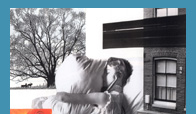Новая серия коллажей Ах как хочется цвета!
9.01.2011
Новая серия коллажей И все они - Любовь
28.12.2010
Новая серия коллажей Звонкие звезды

 |  |  |

Новости
20.02.2011 Новая серия коллажей Ах как хочется цвета! 9.01.2011 Новая серия коллажей И все они - Любовь 28.12.2010 Новая серия коллажей Звонкие звезды 
|
В Центральном музее связи имени А.С.Попова подготовлен курс лекций на тему: «Всемирный почтовый дизайн», рассказывающий об основных художественных стилях, таких как неоклассицизм, эклектика, модерн, Ар деко, функционализм-конструктивизм и других, повлиявших на оформление почтовых документов. Курс рассчитан на широкий круг посетителей. Лекции читает искусствовед, переводчик, член Международной ассоциации искусствоведов - Дьяченко Андрей Петрович.
далее Персоны Весь список Искусство Весь список Открытки О сайте АССАМБЛЯЖ пространственный коллаж из разнородных предметов
|
Francis Picabia
The Handsome Pork-Butcher circa 1924-6, circa 1929-35 Le Beau Charcutier Painted in two separate periods, this picture has a complex history. In its original state, it showed a pink-faced man, wearing a white shirt and a black suit. It was painted in a deliberately simple, naive style, using household, rather than oil, paint, and incorporated various manufactured materials: string and short plastic combs were used in the man's hair, darning needles for the eybrows, toothpicks for the moustache and goatee beard, curtain rings for the eyes and mouth, measuring tape for the nose, and an array of pen-nibs in the area of the figure's bow-tie. For some time the work was thought to belong to Picabia's Dada period (c.1915-21); indeed, the canvas is dated 1921 on the stretcher. However, the work appears to have been one of a group of paintings with collaged elements made between 1924 and 1926, in which Picabia lampooned traditional art and, through using everyday real objects, aimed to integrate the spheres of art and everyday life. Although many of these collage-paintings of the mid-1920s have been mistakenly antedated, experts now agree that, in comparison with earlier Dada works, they have much simpler subjects, are executed in a more direct and sensuous manner, and demonstrate a gentler humour. It is possible that this work was intended as a satirical portrait of the prominent French intellectual and politician Raymond Poincare, Member of the French Academy, President of the French Republic 1913-20 and Prime Minister in 1922-4 and 1926-9. Certainly, the painting was described as such in a letter of 1926 by the artist El Lissitzky who included the work in an exhibition he organised in Dresden in that year. (A photograph of the work as installed in this exhibition is reproduced in El Lissitzky 1890-1941: Retrospektive, exhibition catalogue, Sprengel Museum, Hanover, January-April 1988, p. 48.) If this work was indeed a satirical portrait of Poincare, Picabia may have intended the work to echo the sentiments expressed by the leader of the Surrealist movement Andre Breton who wrote in 1926: 'We consider the presence of M. Poincare at the head of the French government to be a serious obstacle to all serious thought, an almost gratuitous insult to the spirit and a ferocious joke which should not be allowed to pass.' (quoted in Maria Lluisa Borras, Picabia, London 1985, p. 292). However, in 1927 the painting was exhibited at the Galerie Van Leer, Paris, simply as Portrait. It is therefore not clear how seriously or for how long Picabia himself regarded the work as a portrait of Poincare.
Some years later — it is not known exactly when — Picabia reworked the whole image. He pulled off all the collaged elements except the measuring tape, exposing in the process areas of bare canvas. He then painted the man's features in black, replicating the shapes of the original collaged elements, and stuck on new, larger combs in the area of the man's hair. Most dramatically, he painted in outline over the man's face the head and hands of a glamorous woman, with blue eyes and full red lips. Such overlapping of different images was a feature of Picabia's 'Transparency' paintings, the first of which date from the late 1920s. This technique allowed Picabia to create complex works, evocative at times of dream-like states of mind. In the case of this work, the two images of the man and the woman occupy the same space but nonetheless remain separate and incongruous. It is known that this process of repainting was completed by mid-1935: a photograph of Picabia's studio, taken in the summer of that year, shows the work in its revised form but still with the original Legrain frame (now lost). Strangely, the work in its original state was reproduced in the French review XXe Siecle in May 1938, without its original frame and wrongly dated 1915. It acquired its present title by March 1949 when it was exhibited at the Galerie Rene Drouin, Paris. With its layering of different images and combination of styles, The Handsome Pork-Butcher resists straightforward interpretation. To avoid the trap, as he saw it, of repeating himself, Picabia made many distinct shifts in style over his career, and chose to reinterpret and renew past work by repainting many of his old canvases. Two other paintings by Picabia in the Tate's collection, The Fig-Leaf, 1922, and Portrait of a Doctor, 1935-8, for example, were either totally or partially repainted. William Camfield, author of many texts on the artist, has described Picabia's decision to repaint this particular work as a dumbfounding, and essentially dadaist, 'act of self-liberation' (Francis Picabia: His Art, Life and Times, Princeton, New Jersey 1975, p. 220). Further reading: William Camfield, Francis Picabia: His Art, Life and Times, Princeton, New Jersey 1975 On page 220, note 16, Camfield writes that this painting was probably exhibited in the 1927 show as 'Combs, Needles, Rubbers and Feathers'. The work was reproduced in Artwork with this title, but this seems to have been simply a mistake. The title has been attributed to another work (repr. Borras no.50), which, unlike this portrait, incorporated all these items, including feathers. Maria Lluisa Borras, Picabia, London 1985 Jennifer Mundy June 1997 Последние публикации в разделe | ||||||||